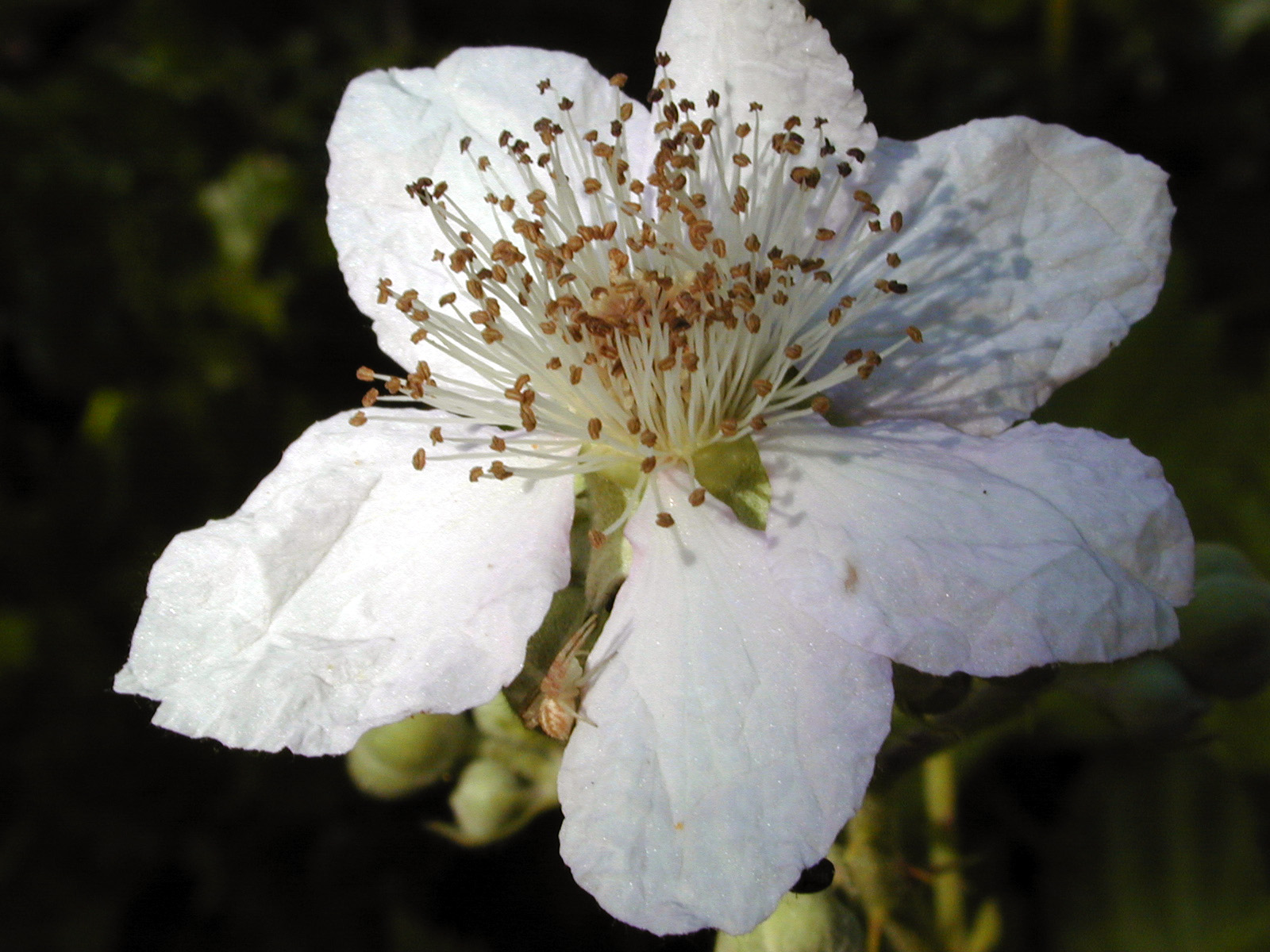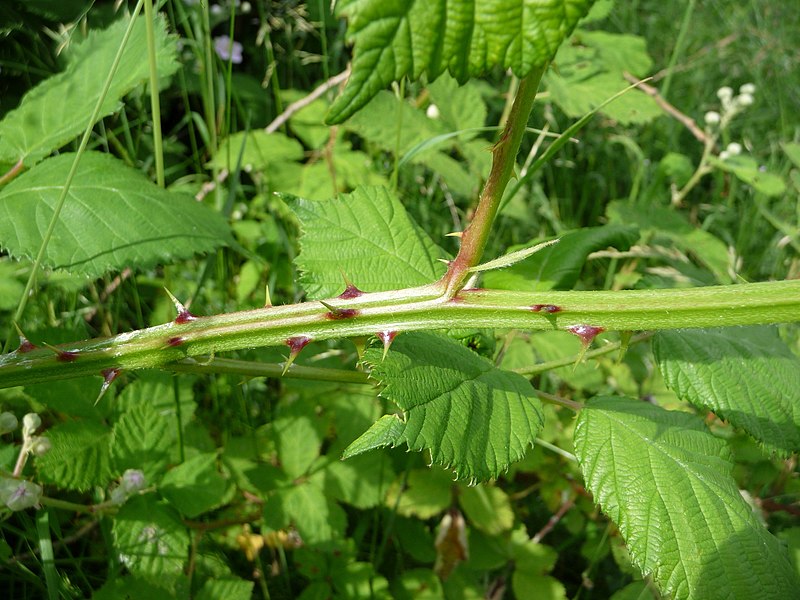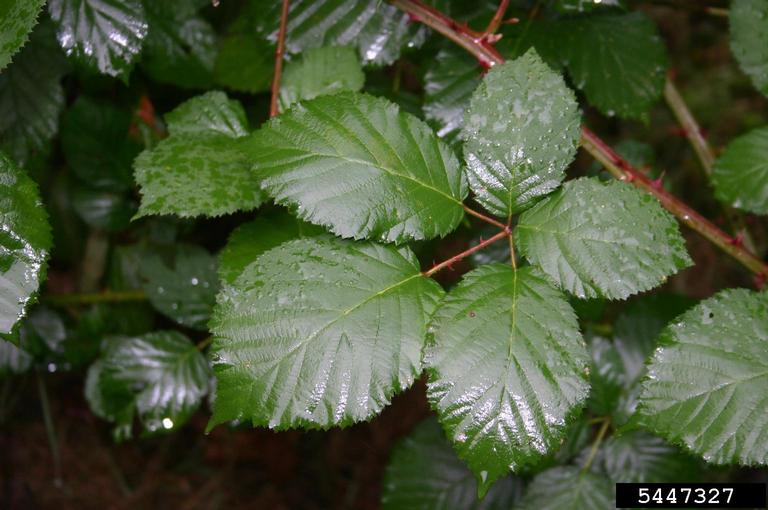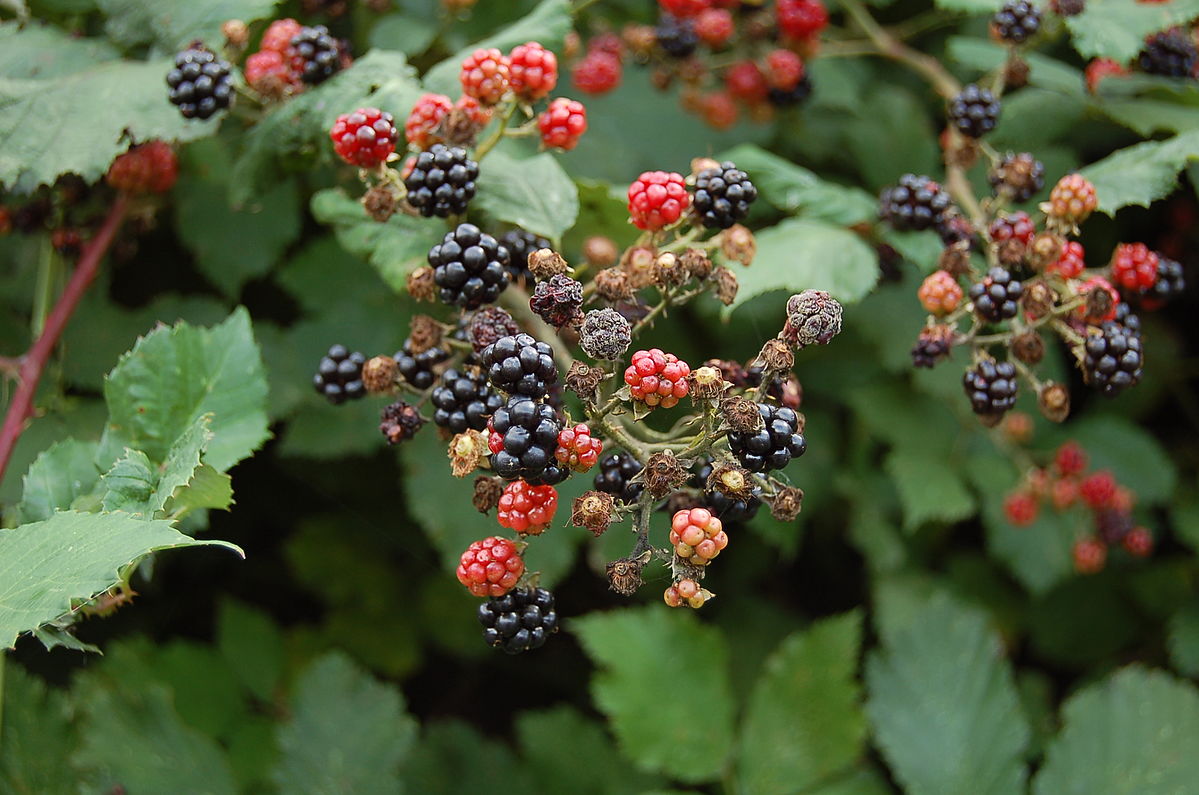Himalayan Blackberry

Himalayan Blackberry
(Rubus armeniacus)
Priority: - Established / Strategic Control
Tags: Terrestrial
Identification and Reproduction
Identification:
- Evergreen shrub that forms dense thickets and brambles.
- Canes grow to 3 m in height and up to 12 m in length. Stems are stiff and five-angled with large prickles. Canes have the ability to root at the tips and produce axillary daughter plants.
- Compound leaves are large and toothed, typically grouped in fives or threes. Underside of leaves will also bear prickles.
- Small clusters of flowers which are white to pink, stalked, and five-petaled.
 For a comparision of Himalayan blackberry and possible look alikes, check our our guide.
For a comparision of Himalayan blackberry and possible look alikes, check our our guide.
Reproduction:
- Himalayan blackberry can reproduce by seed, vegetatively from rooting at the stem, as well as sprouting from root buds.
- Plants begin flowering in spring with fruit ripening in midsummer to late August. Each individual fruit will produce a number of seeds.
- Once a thicket has developed seed production can reach up to 7,000-13,000 seeds per square meter, and seeds can remain viable in the soil for several years.
- Fruiting stems generally die back at the end of the season, but non-fruiting stems may persist for several years before producing fruit.
- Seeds are dispersed by birds and omnivorous mammals. Dispersal also occurs with root and stem fragments.
Habitat & Ecology
Found on disturbed sites, roadsides, pastures, stream-banks, and forest edges. They prefer rich, well-drained soils but they thrive on a variety of soil types.
Impacts
Social:
- Brambles can prevent access for recreation, reduce aesthetics of a landscape and block visual sightlines.
- Sharp prickles can scratch and rip clothing as well as exposed skin.
- Fruit flies overwinter in Himalayan blackberry berries, which when they emerge in Spring, impact agricultural berry crops.
Ecological:
- Outcompetes native vegetation, prevents growth of native trees, and reduces biodiversity.
- Dense thickets will also impede the movement of large animals.
- Increase flooding potential and sedimentation.
Management
Manual/Mechanical Control:
- Best time for treatment is between late summer and early fall, prior to plant dormancy.
- Mowing is effective, but BEWARE as this can also damage native species. If roots are not manually removed, mowing several times per year for 3-5 years is necessary to exhaust root reserves. If mowing is only conducted once per year it should be done as plants begin to flower.
- Persistent tilling or cutting in combination with mowing can be effective. This method is most effective if followed up with spot applications of herbicide or removal of entire root system.
- If plants are cut, all plant material must be collected in bags and disposed of at a landfill.
Click here for a manual/mechanical management prescription for Himalayan blackberry.
Chemical Control:
- A number of herbicides have proven effective on Himalayan blackberry: dicamba, glyphsate, triclpyr and metsulfuron methyl.
- Proceed with caution during applications and refrain from injuring or killing non-target species.
- Remember to full read and follow chemical labels.
For further details on proper Himalayan blackberry chemical control please refer to the Metro Vancouver's BMP for Himalayan blackberry (pg. 10-18).
Resources
Download the Invasive Species Council of BC's factsheet on Himalayan blackberry here.
Download the Metro Vancouver's Best Management Practices for Himalayan blackberry here (pg. 10-18).
Download the Metro Vancouver Factsheet on Himalayan blackberry here.
Header photo (Meloe).
Photo Gallery

















